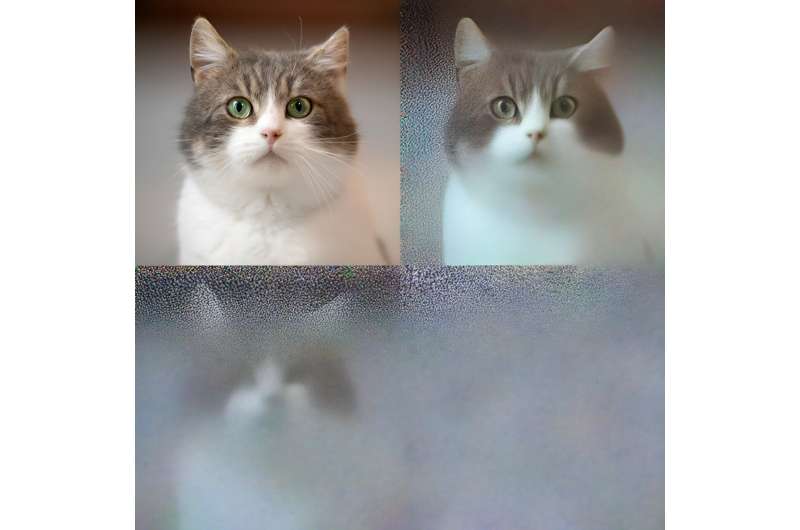This article has been reviewed according to Science X's editorial process and policies. Editors have highlighted the following attributes while ensuring the content's credibility:
fact-checked
trusted source
proofread
The link between fuzzy images and quantum fields

Mathematical solutions to thorny quantum problems can be found more quickly by exploiting the correspondence between the statistical methods used in deep learning and techniques for implementing quantum simulations, a team led by a RIKEN researcher has shown in a new study published in the Journal of High Energy Physics.
One of the most successful theories in modern physics, quantum field theory is physicists' attempt to combine three theories—classical field physics, Einstein's special relativity and quantum mechanics—into a single mathematical model.
It has been successful in solving problems in particle physics and condensed-matter physics, but these calculations are computationally intensive and require a lot of computer power.
One way to simplify things is by treating space and time as a grid of discrete points, rather than considering them as the continuous variables they are in reality. Lattice field theory is still tricky, but it is computationally feasible since it applies advanced algorithms that take advantage of statistical interpretation.
Now, Lingxiao Wang of the RIKEN Interdisciplinary Theoretical and Mathematical Sciences Program (iTHEMS) and colleagues in the United Kingdom and Germany have shown that one such approach, known as stochastic quantization, corresponds to another statistical technique used in deep learning called generative diffusion.
"We've shown that models based on generative diffusion provide a powerful framework for exploring quantum field theories on a lattice," explains Wang.
Generative diffusion models learn by corrupting the data associated with an image or text, and then fixing it. Once the model has learned how to fix corrupt data, it can apply the reverse process to entirely random, or noisy, input, in order to generate new realistic images or sensible text.
Wang and the team realized that the stochastic quantization method used in quantum field theory works in a very similar way.
"Stochastic quantization involves introducing quantum noise into the field system, which allows for a probabilistic interpretation of quantum fields," explains Wang. "This approach is useful in lattice field theory as it provides an alternative way to simulate quantum field theories on a computer."
Another way of looking at it is that while generative diffusion generates realistic data from random noise by reverse engineering noise, stochastic quantization simulates a real quantum world from a trivial one by the evolution of quantum noise.
Wang and the team demonstrated the utility of this correspondence by applying it to a specific type of lattice field theory simulation. They found solutions much faster than was possible previously.
The team intends to use their discovery to study more-complex systems. "The next step is to explore a quantum field system that has more dimensions, which is closer to our physical world," says Wang.
More information: L. Wang et al, Diffusion models as stochastic quantization in lattice field theory, Journal of High Energy Physics (2024). DOI: 10.1007/JHEP05(2024)060
Provided by RIKEN





















